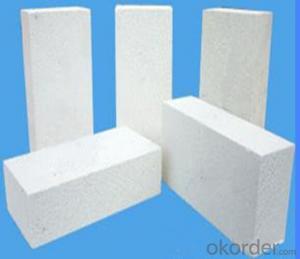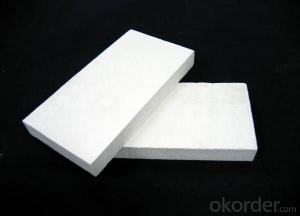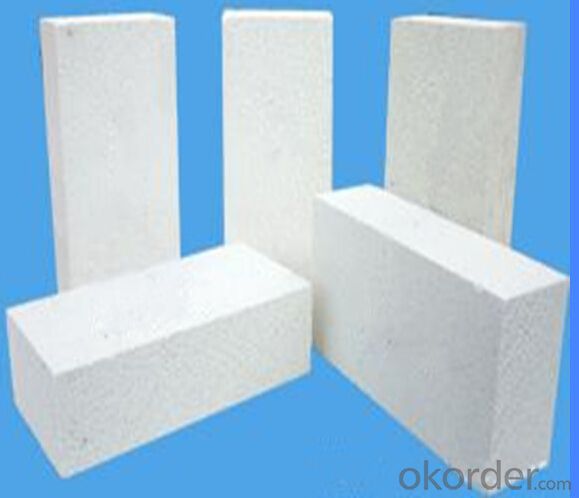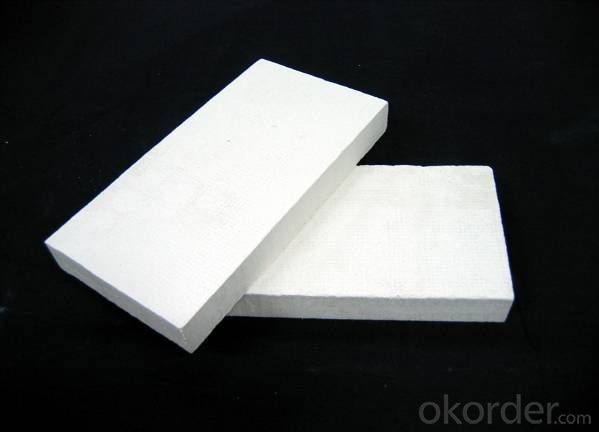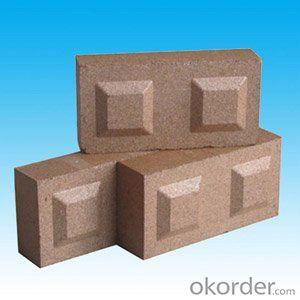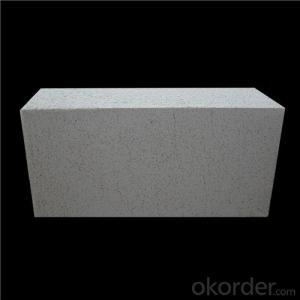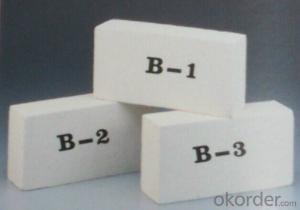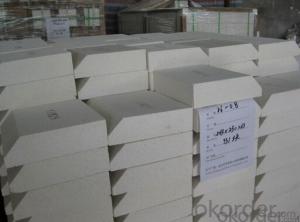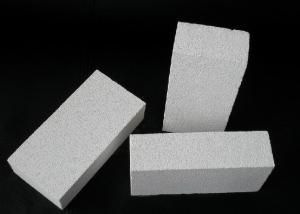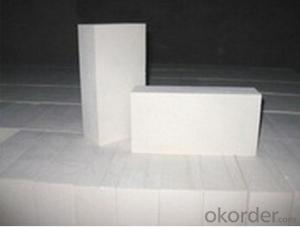Refractory JM Mullite Insulation Brick JM-23
- Loading Port:
- Shanghai
- Payment Terms:
- TT OR LC
- Min Order Qty:
- 10 m.t.
- Supply Capability:
- 1000 m.t./month
OKorder Service Pledge
OKorder Financial Service
You Might Also Like
Refractory mullite insulating refractory brick JM 23
Okorder series heat insulation brick
Okorder series thermal insulation brick is an effective, energy saving, low carbon, environmental protection advanced, according to the ASTM standard manufacturing products. Okorder series products are best Li Ning and insulation in all types of industrial furnaces in the metallurgical field, aluminum, petrochemical, electric power and glass ceramic materials. They can be used as part of the working layer of thermal insulation or non - melting. Products have been widely used in the following furnace, achieved satisfactory results.
Application of heat preservation brick
Metallurgical Industry: blast furnace, hot blast furnace, heating furnace, etc..
Petrochemical Industry: ethylene cracking furnace, hydrogen production furnace, primary reformer, heating furnace, etc..
Ceramic industry: roller kiln, kiln, etc..
Glass industry: glass furnace regenerator, etc.
Carbon industry: carbon furnace, etc..
Aluminum electrolysis industry: aluminum reduction cell, etc.
Other industries: tunnel kiln, shuttle kiln, etc..
Advantages of heat insulation brick
Low thermal conductivity: more porosity will bring good thermal insulation effect, energy saving.
High crushing strength: high crushing strength, volume stability.
Low heat storage: small heat storage to absorb more heat, energy-saving effect is obvious.
Gao Chundu: iron, alkali metal impurity content is low.
The precise size: Brick size processing precision, special shape cutting and grinding, accelerate the brickwork.
Insulating brick picture
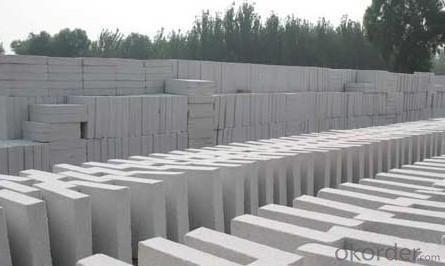
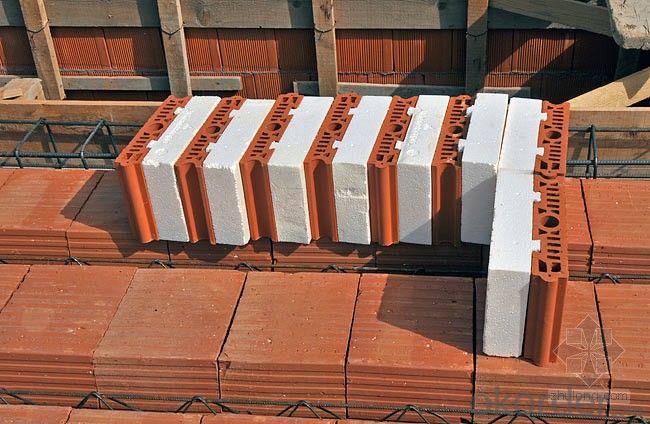
Common problem solutions
1. What products do you have?
We have all kinds of refractory bricks, refractory casting materials, mortar, cement, ceramic fiber products, etc..
Or you can browse our products to choose what you need.
2. How to control product quality?
With strict quality control system throughout the material selection and production process, we have the quality of refractory materials and ceramic fiber products to meet customer requirements.
From the selection of raw materials, the quality of our control to start. The quality certificate of the raw material is required, each batch of the products are to be tested in the use of the forward line. In the production process, the quality control by the workers, and then each piece of classification, and through the quality supervision and inspection.
3. Can you give me a brief introduction to the application of your product?
My company is mainly engaged in refractories in the steel, cement, glass, ceramics, petrochemical, electric power and other industries.
4. What information do you need if I need you?
In order to select the right products, we will provide us with information, such as the United States, technical data, order quantity, product application, etc..
If you have any questions, please contact us.

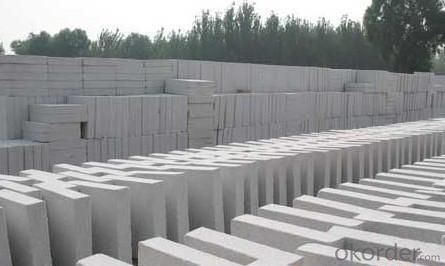

- Q: Can insulating fire bricks be used in the construction of industrial chimneys?
- Yes, insulating fire bricks can be used in the construction of industrial chimneys. These bricks have excellent thermal insulation properties, which can help in reducing heat loss and improving the overall energy efficiency of the chimney. Additionally, insulating fire bricks are lightweight and resistant to high temperatures, making them suitable for the harsh conditions often found in industrial settings.
- Q: Can insulating fire bricks be used for insulation in hot water tanks?
- Indeed, insulating fire bricks are suitable for insulating hot water tanks. Their superior thermal insulation properties deem them an optimal selection for such purpose. By utilizing these bricks, heat loss from the hot water tank can be efficiently prevented, consequently prolonging the water's temperature retention. Furthermore, these bricks exhibit exceptional durability and can endure high temperatures without fracturing or shattering, rendering them a dependable option for hot water tank insulation.
- Q: Can insulating fire bricks be used for insulation in smelters?
- Yes, insulating fire bricks can be used for insulation in smelters. Insulating fire bricks are specifically designed to withstand high temperatures and provide excellent thermal insulation. They are made from lightweight refractory materials that have low thermal conductivity, allowing them to effectively retain heat and minimize heat loss. This makes them ideal for use in smelters, where maintaining high temperatures is crucial for efficient metal smelting processes. Additionally, insulating fire bricks are resistant to chemical attack and mechanical stress, ensuring their durability and suitability for use in harsh smelting environments.
- Q: Are insulating fire bricks suitable for use in incinerators?
- Indeed, insulating fire bricks are well-suited for utilization in incinerators. Tailored specifically to endure elevated temperatures and offer exceptional insulation qualities, these bricks prove to be ideal for incinerators. They exhibit remarkable resistance to thermal shock, ensuring their structural integrity remains intact even under extreme heat exposure. Moreover, these bricks possess low thermal conductivity, which aids in diminishing heat loss and enhancing the overall energy efficiency of the incinerator. The combination of their heat endurance and insulation effectiveness renders them a dependable option for incinerator utilization.
- Q: Are insulating fire bricks resistant to hydrogen sulfide?
- Yes, insulating fire bricks are generally resistant to hydrogen sulfide due to their high melting point and chemical stability.
- Q: Do insulating fire bricks have a high fire resistance rating?
- Insulating fire bricks possess an impressive fire resistance rating. These bricks are specifically crafted to endure elevated temperatures while providing exceptional insulation against heat transfer. They are composed of high-purity refractory materials, namely alumina and silica, which possess a high melting point and can withstand extreme heat. With the ability to endure temperatures reaching 3000°F (1650°C), insulating fire bricks exhibit significantly lower thermal conductivity compared to ordinary bricks or alternative materials. This renders them highly suitable for applications necessitating strong fire resistance, such as industrial furnaces, kilns, fireplaces, and chimneys. Moreover, their insulating properties aid in reducing heat loss, thereby promoting energy efficiency and cost-effectiveness.
- Q: Do insulating fire bricks affect the overall aesthetics of a structure?
- The overall aesthetics of a structure are typically not significantly affected by insulating fire bricks. These bricks are mainly used for their thermal and insulating properties, making them a popular choice for fireplaces, kilns, and furnaces. Insulating fire bricks are commonly made from lightweight materials like clay, alumina, and silica, which can be easily shaped into different sizes and forms. While they may not possess the same visual appeal as traditional bricks or decorative materials, they are often hidden behind a layer of refractory mortar or a decorative facing material. If exposed, the appearance of insulating fire bricks is generally neutral and does not diminish the overall aesthetic appeal of the structure. However, it is worth noting that there are various options in the market for insulating fire bricks, offering different colors and textures. Architects and designers can select from these options to achieve the desired look and feel for the structure. Ultimately, the main focus of insulating fire bricks is their functionality rather than their visual impact. They offer exceptional insulation, resistance to high temperatures, and energy efficiency, making them a practical choice for structures that require heat containment and thermal protection.
- Q: Can insulating fire bricks be used in the construction of boilers for power plants?
- Yes, insulating fire bricks can be used in the construction of boilers for power plants. Insulating fire bricks are specifically designed to have low thermal conductivity, which allows them to retain heat and prevent energy loss. This property makes them ideal for use in high-temperature applications such as power plant boilers, where efficient heat transfer is crucial for the production of steam and generation of electricity. Additionally, insulating fire bricks are lightweight and have good thermal shock resistance, making them suitable for the demanding conditions found in power plants. Overall, the use of insulating fire bricks in the construction of boilers can help improve energy efficiency and reduce heat loss, leading to increased operational performance and cost savings in power plants.
- Q: What is the typical thermal conductivity of an insulating fire brick?
- The typical thermal conductivity of an insulating fire brick ranges from 0.2 to 0.5 W/mK.
- Q: Can insulating fire bricks be used in paper mills?
- Insulating fire bricks are indeed applicable for use in paper mills. They are widely employed in various industries that necessitate effective insulation against elevated temperatures, including steel, glass, and ceramics. Within paper mills, where activities like drying, heating, and burning take place, insulating fire bricks offer an ideal solution for lining kilns, furnaces, and other equipment. Their exceptional thermal insulation properties and ability to withstand extreme temperatures render them highly suitable for deployment in paper mills, where heat plays an indispensable role in the manufacturing process. Furthermore, these bricks possess the advantages of being lightweight and exhibiting low thermal conductivity, enabling efficient heat retention and yielding energy savings.
Send your message to us
Refractory JM Mullite Insulation Brick JM-23
- Loading Port:
- Shanghai
- Payment Terms:
- TT OR LC
- Min Order Qty:
- 10 m.t.
- Supply Capability:
- 1000 m.t./month
OKorder Service Pledge
OKorder Financial Service
Similar products
Hot products
Hot Searches
Related keywords
